Trichinosis is a parasitic disease that is particularly common in children. If worms appear in one of the organs or systems of the child's body, then their negative effect will affect not only its functioning, but also the functioning of the immune and nervous systems. . Symptoms such as cough, loss of appetite, indigestion, allergic reactions may be accompanied by other unrelated symptoms. If you suspect a helminthic infestation, it is important to immediately contact a specialist, not self-medicating.
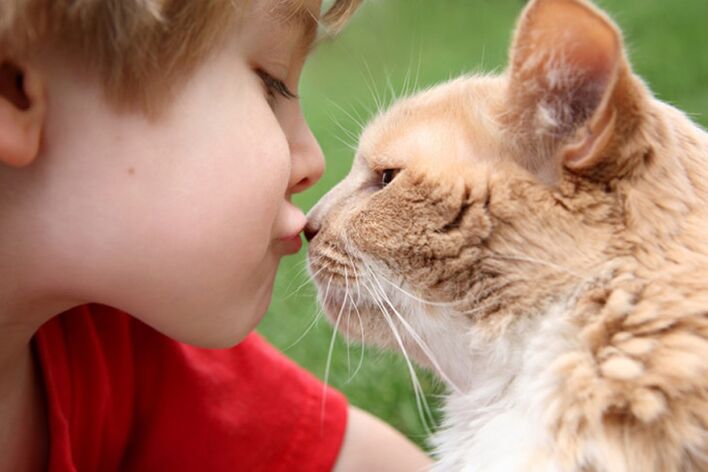
Why is helminthic disease dangerous?
Most helminths commonly found in children are parasitic in the intestines. In it they live and feed, so they reproduce and release toxins. Parasitic worms also mechanically affect the intestinal wall. The consequences of the active life of worms in the body of a child can be:
- Avitaminosis and weight loss. These problems arise due to lack of nutrients and vitamins. As a result, children begin to fall behind in development. Pathological processes may begin in other organs.
- Enteritis, colitis, dysbacteriosis, bleeding. All these unpleasant and serious complications are due to the mechanical damage caused by the worms to the child in the body.
- The development of inflammatory processes in the appendix, liver, gallbladder. These are the organs adjacent to the intestine that the parasites can move into.
- Bowel obstruction. It can be partial or complete, and sometimes there is a risk of rupture of the bowel wall.
- body poisoning. When worms live and die inside people, they secrete active toxins.
- Allergy. The waste products of the parasites are considered strong allergens.
- Violation of the function of the liver. For this reason, the child must follow a diet for many years and consume extra enzymes.
- Psychosis. Worms tend to have a negative impact on the nervous system of the patient.
Types of worms affecting the body of children
There are many types of parasites that can appear in a child's body. They vary in size, both small and large, and also manifest themselves in different ways and have different incubation periods, ranging from 1–1. 5 months. To prescribe effective drugs that help cure helminths, you need to correctly determine their type. The most common types in children are:
- Bandage. These worms include cestodes, dwarf tapeworms, tapeworms, and echinococcus.
- Surround. Among them are the annelids.
- Around. Their representatives are trichinella, pinworms, flagellates, roundworms, roundworms.
- Thorn head. They are represented by the scrapers.
- Flat. Among them are flukes, small liver flukes.
Causes and methods of infection
It is possible to get a helminth infection not only in a foreign country or from trying an unfamiliar dish on the menu. Playing in a sandbox with unwashed hands is the easiest way for worms to enter a child's body. Toddlers tend to touch and study things, without thinking about the purity of the subject being studied. They can then safely lick their fingers without washing them first. Worms persist for a very long time (from a few weeks to several months), remaining on the surface of various objects.
In addition to dirty hands, the main sources of infection include:
- dirty toys and surfaces;
- clothes;
- a pair of shoes;
- railing at the entrance door;
- door knob;
- water;
- dirty vegetables;
- earth, earth, sand;
- contact with a sick child;
- meat is not cooked enough;
- fish or other seafood that has been poorly heat-processed.
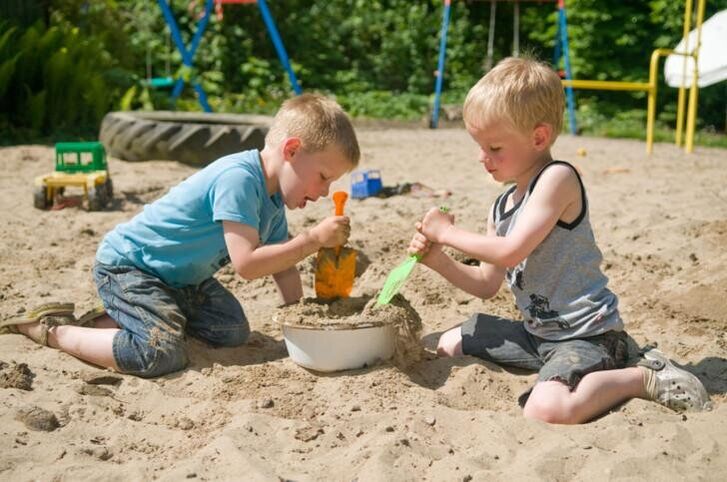
Symptoms of the presence of parasites in children
Usually in children under 1 year of age, any manifestation of the presence of parasites in the body is observed in isolated cases. The first symptoms of helminthic infection have been noted at an older age (about 2-3 years) in children attending kindergarten or other developing institutions.
Helminthiases in children are represented by a wide variety, and each individual type has its own specific characteristics. However, there are several symptoms that are characteristic of any type of worm:
- irritable and moody for no apparent reason;
- restless sleep;
- allergy;
- itching in the anus;
- increased salivation;
- digestive disorders, accompanied by diarrhea, constipation, nausea and bloating;
- anorexia;
- lose weight with good nutrition;
- pallor of the skin.
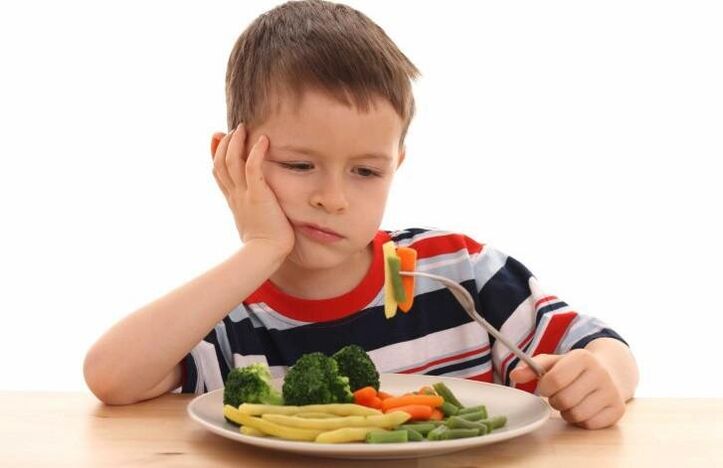
In adult children, these symptoms may include:
- headache;
- upset stomach;
- dizzy;
- increased fatigue;
- poor concentration.
Enterobiasis (pinworm)
An illness when parasites like pinworms enter a child's body is called intestinal worm disease. This is the most common type of helminths in young children of preschool age - between 2 and 5 years old. They vary in average size, from 5-13 mm, and are minimally harmful compared to other parasites.
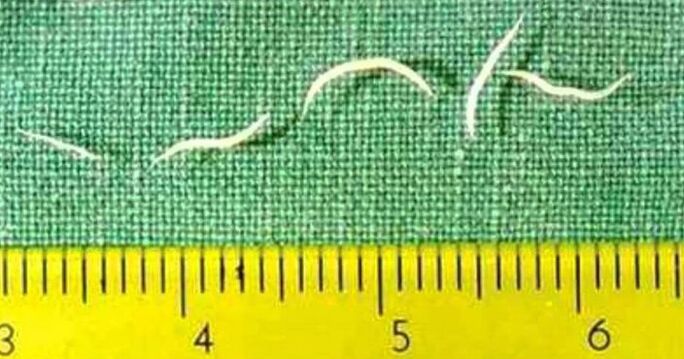
Their presence causes the appearance of the following symptoms:
- Severe itching in the anus. Its intensity can reach the intensity that makes the baby sleep poorly, scratch the anus, cause itching and inflammation.
- Urinary incontinence at night. Seen in girls. This happens if the pinworm enters the urethra from the anus. As a result, your baby begins to develop urethritis, vaginitis, or cystitis.
Pinworms are easy to get rid of and are not as dangerous as other worms. It is important to promptly consult a doctor and pass the necessary tests, when the first signs appear. If pinworms are found in children, parents need to treat them as well. All clothing, towels, and other rags should be washed and ironed, and the room laundered thoroughly, as the eggs of these worms are found on all surfaces in an infected person's home.
Roundworm (ringworm)
The second most common in children is roundworm up to 40 cm in size, living in the small intestine - roundworm. In addition to the general symptoms of ascariasis, in the case of ascariasis, the infected person in the early stages develops an unprovoked cough in the absence of any inflammatory processes in the respiratory tract. Its appearance is due to the fact that the larvae of this parasite enter the lungs and upper respiratory tract, and through coughing they get back into the stomach.
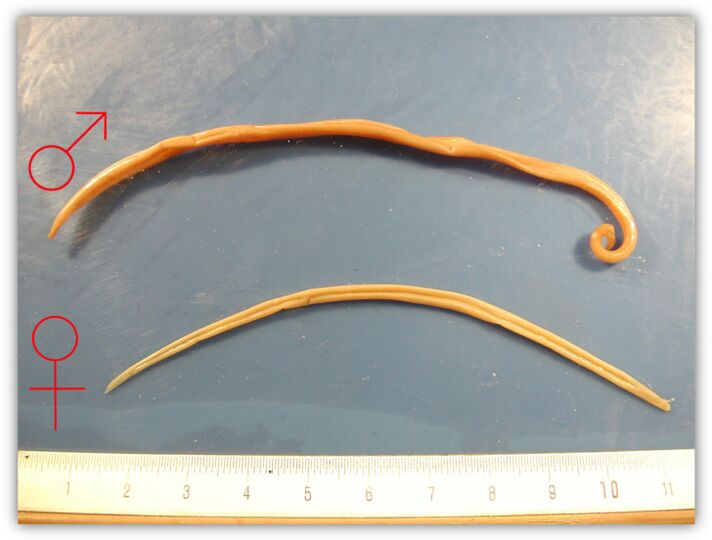
Other featured features include:
- headache and dizziness;
- allergy;
- enlarged lymph nodes;
- rising temperatures;
- intestinal disorder.
At the same time, itching in the buttocks with ringworm is absent. Not only the intestines, but any other organ or system of the body can become a habitat.
Trichuriasis (whiskers)
Parasites in children are worms with a very thin body, up to 5 cm long, female flagellates can lay up to 2 thousand eggs at a time. Usually, such helminths are more common in adolescence, and in young children they are much less common.
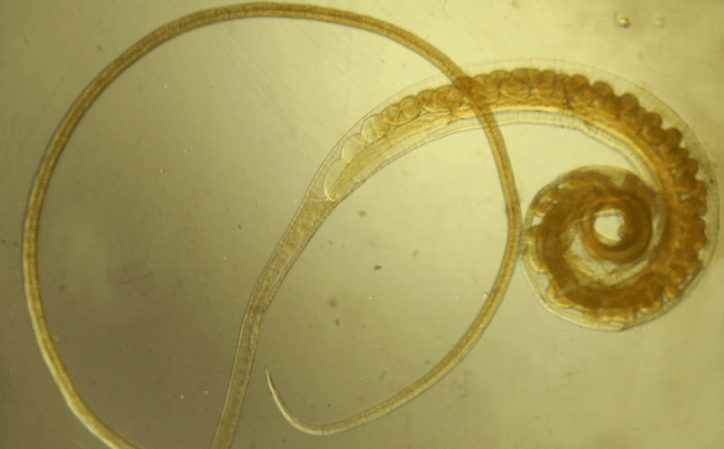
A distinctive feature of helminthiasis is that there is hardly any sign of a helminth infestation. Possible symptoms include:
- disorders in the work of the nervous system (discomfort, headache);
- problems with the digestive system, accompanied by diarrhea, nausea or vomiting;
- increase body temperature.
Signs of other parasites
Among other types of worms that can occur in children, the following can be distinguished:
- Tapeworm disease or dwarf mouse tapeworm. He has no specific symptoms. Its presence can be recognized by nausea, loss of appetite, heartburn, diarrhea and constipation, headache, abdominal pain, increased salivation, dizziness, fatigue, skin rash, rhinitisallergies and bronchospasm.
- Opisthorchiasis or the Siberian fluke of cats. These worms in children cause subthreshold temperatures, skin rashes, swollen lymph nodes, pain in the joints and right hypogastric region, pancreatitis, gastritis and other signs of the gastrointestinal tract, permanent catarrhal syndrome and more.
- Canine roundworm disease. Animal transmission. The main symptoms are an allergic cough accompanied by aspiration and a skin rash, which is characterized by intense itching.
- Wide ribbon. The source of infection is not fried or uncooked fish. Symptoms include abdominal pain, allergic reactions, B12 deficiency anemia, and other common signs of intestinal disorders.
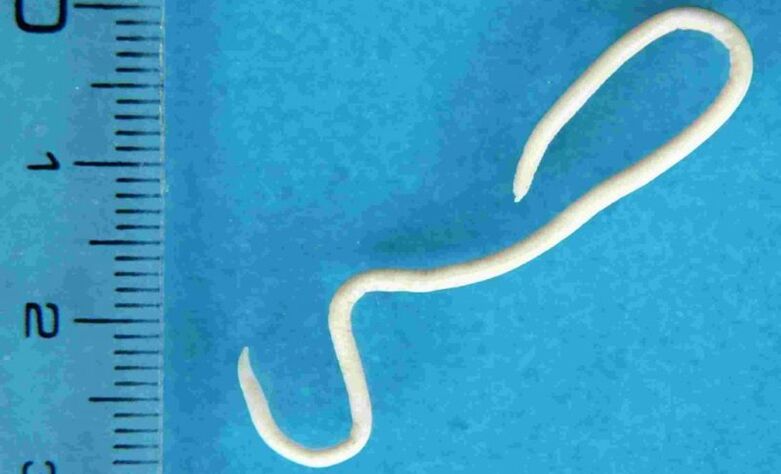
How to check if your child has worms?
In most cases, it is difficult for parents to associate specific symptoms with helminthiasis or understand why a child suddenly has vomiting or other symptoms for no apparent reason. When there is a slight doubt about the presence of worms, one should go to a specialist and do tests, which make it easier to check the assumption of a helminthic invasion. It won't take much time and effort, but the cause of the baby's illness will be clear, and treatment can be carried out in a timely manner.
Self-diagnosis
Self-diagnosis is the careful monitoring of changes in a child's behavior, development, habits, routines and normality - both physical and emotional - psychologically.
It includes:
- periodically check the stool for the presence of worms;
- monitor the frequency of defecation;
- check the skin for rash, redness, or irritation;
- Check the amount of food consumed.
Test
Medical diagnosis is necessary to confirm the diagnosis if worms are detected visually or only when worm infestation is suspected. To find the cause of your symptoms, you'll need a series of tests, including:
- Fecal analysis. In it you can find eggs or parts of cooked worms. The effectiveness of this method is maximal during the period when there are mature individuals in the gut, i. e. about 3 weeks to a month after infection. Feces should be collected in the morning and sent to the laboratory.
- A stain or scratch from the anus. To do this, use a dry cotton swab dipped in glycerin or tape. The analysis allows you to identify worm larvae that have been parasitized on the skin areas of the anus.
- General blood analysis. Patients with blood helminths may have increased immune cell counts, high erythrocyte sedimentation rates, and decreased hemoglobin levels.
- ELISA blood test. Allows you to detect parasites at an early stage with the help of staining enzymes that attract worms, viruses and other foreign bodies.
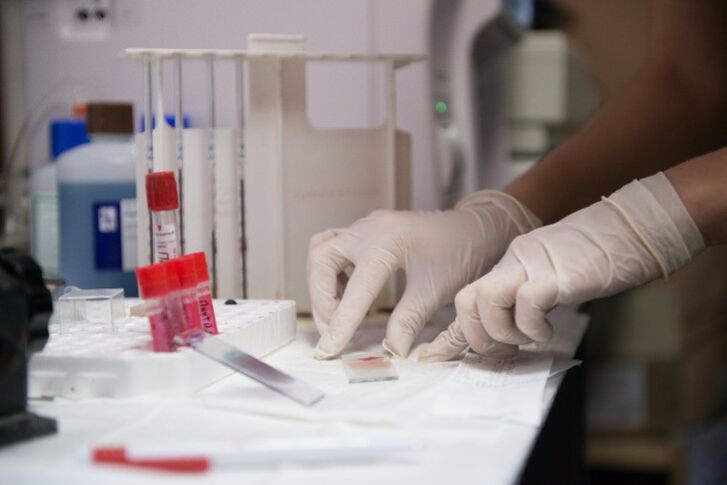
Additional tests for parasites in children that may be performed in the outpatient setting include:
- analysis of the presence of IgG antibodies;
- ultrasound procedure;
- X ray.
Features of drug treatment
The appointment of drugs to fight parasites in children must be handled by a doctor after passing all the required tests and establishing the correct diagnosis and type of worms. Among the most popular drugs against the penetration of helminths, it should be noted:
- Dewormers act on nematodes. Acceptable from 6 months. Effective against all roundworms, but useless in case of flatworms.
- An anthelmintic agent of the benzimidazole group. Appointment from 2-3 years. Dosage is determined at the rate of 10 mg per kilogram of body weight.
- Antimicrobial and antigenic drugs from the nitroimidazoles group. Suitable for all ages by which the daily dose is determined.
- An anthelmintic drug of the benzimidazole group. Used for children from 2 years old against roundworm.
What folk remedies can help?
In addition to using drugs, worms can be treated with folk remedies.
The most popular products that can effectively treat worms in children are:
- Garlic. Successfully destroy roundworms, tapeworms, pinworms and deal with many other parasites. Suitable for children aged 5 years and over and with a healthy stomach. It should be given 1 clove before meals once a day. Can be taken with water or milk. Garlic is also a great antiviral agent.
- Pumpkin seeds. They should be eaten when hungry and alive. Usually children like this treatment. Otherwise, they can be crushed and mixed with honey if the child is not allergic to honey.
- Sage tree. Allowed for children from 12 years old. To simplify the reception, it should be mixed with a piece of bread and salt.
- Fresh carrot juice. Just half a cup on an empty stomach, once a day for 7-10 days. You can also gnaw on raw carrots.
- Beetroot juice. It is given on an empty stomach. It is recommended to alternate it with carrots, so as not to provoke a violation of the stool.
- Walnuts. A few pieces a day will be enough for a child.
- Pineapple. Fresh, uncanned fruit is a delicious and effective remedy.
- citrus. To their "friendship", you can add sour berries and fruits.
Prevent

Regardless of the type of worm, prevention depends on observing the basic rules of personal hygiene:
- Washed food. All vegetables, fruits and berries should be washed before eating. As an additional measure, the product can be used with boiling water.
- Clean hands. You need to wash them well before eating, after walking, going to the hospital and in public places, after going to the toilet and playing with animals, even pets.
- Deworming for pets. It must be done at least 2 times a year.
- Boiled or filtered water for drinking. It is forbidden to drink water from open reservoirs. They should also be avoided swimming to avoid splashing water in their mouths. Salt lakes and seas are an exception.
- Regular prevention with the help of folk remedies.
- Take care of old and new toys. Soft toys should be washed periodically, and plastic and plastic items should be washed with boiled water. New ones before giving to children should be boiled in boiling water to not spoil.
- No insects! Flies, mosquitoes, and cockroaches carry helminth eggs on their feet. It is important to prevent them from entering the house. To do this, you can use a fumigator, adhesive tape and special crayons.
- Exclude from the child's diet fish and meat dishes that require minimal grilling of animal products.
- Fecal analysis once a year. This procedure will help detect worms at an early stage.
















































